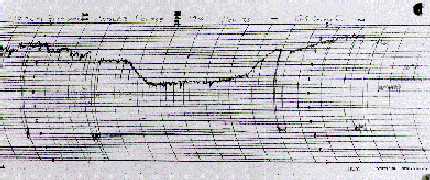The history of the 10.7cm solar flux
The history of the 10.7cm Solar Flux is intimately tied in with the beginnings of Canadian radio astronomy. Immediately after the Second World War, Arthur Covington and his colleagues at the National Research Council in Ottawa used bits of military surplus radar and test equipment to make a radio telescope. The antenna was a 4ft (1.2m) paraboloid from a Type IIIC Gun Laying Radar, mounted on a prototype mount casting for a Model 268 radar. By leaning the mount so that the azimuth axis was pointed at the Pole Star, it was converted into a simple polar mount, which made tracking the Sun much easier. The receiver was a Dicke switching receiver used during the war to test silicon mixer crystals for radar applications. The radar system operated at a frequency of 2800MHz, that is a wavelength of 10.7cm.
The instrument was pointed in the direction of various celestial objects, including Jupiter, the Milky Way, aurora borealis, and the Sun. It was too insensitive to pick up any cosmic source apart from the Sun. However, as time passed, Covington and his colleagues realized that the Sun's emission at 10.7cm wavelength was varying. They did not expect this. Thinking at that time was that the solar emission at centimeter wavelengths would be simply black body emission from a ball of hot gas. This led to the question of whether this was a variation in the emission from the whole disc or that smaller, variable sources were present, perhaps associated with active regions and sunspot groups.
The poor angular resolution of the radio telescope (a few degrees) made it impossible to distinguish between these two possibilities. However, an opportunity to address the question offered itself on 23 November, 1946, when an eclipse of the Sun occurred in the Ottawa area.

The actual recording of the radio emission during that eclipse is shown in this Figure.
The observation showed convincing proof that strong contributions to the total emission at 10.7cm originated in the vicinity of sunspots. The eclipse record shows a strong dip in signal strength after 11:40 local time, when the Moon covered a large sunspot on the solar disc.
Covington then showed that the 10.7cm Solar Flux correlates with indices of solar activity such as sunspot number and total sunspot area, with the advantage over those indices that the measurements are completely objective, and can be made under almost any weather conditions. Since it is closely correlated with magnetic activity, it correlates closely with other activity indices and, since magnetic activity modulates the Sun's energy output, with solar irradiance.
The emission Covington had found is now known as the Slowly-Varying or S-component of solar radio emission. It was subsequently established, through both observation and theory, that the best wavelength to observe this component of solar radio emission is around 10cm. That Covington decided to make observations at 10.7cm wavelength was decided his using radar components designed to operate at that wavelength. The choice had nothing whatsoever to do with astronomical considerations, and must count as one of the more significant coincidences in astronomy.
The 10.7cm Solar Flux is currently one of the best indices of solar activity we have. It now forms a consistent, uninterrupted database covering more than 50 years. Only sunspot number counts cover a longer period, going back to at least the 17th Century. However, these data are subject to subjective effects in observation and evaluation, and are affected by the weather.
Between 1946 and 1990, the measurements were made in the Ottawa area. In 1990, following the closure of the last good observing site in the area, the programme was relocated to the Dominion Radio Astrophysical Observatory, where it will be for the foreseeable future.